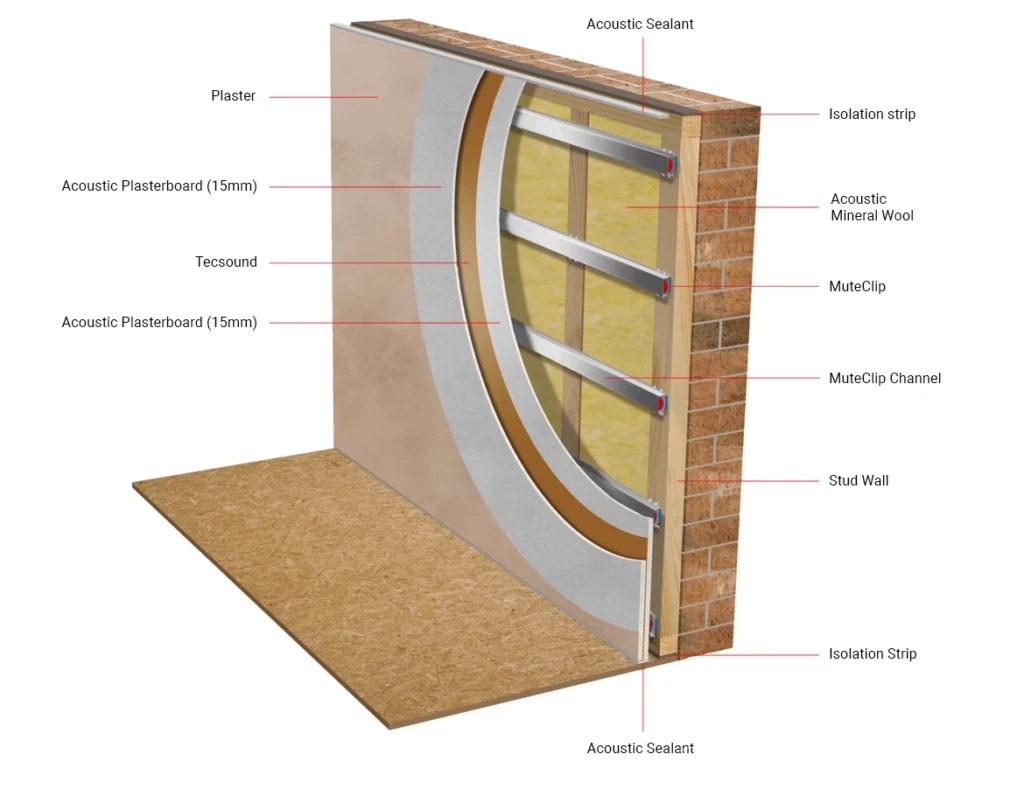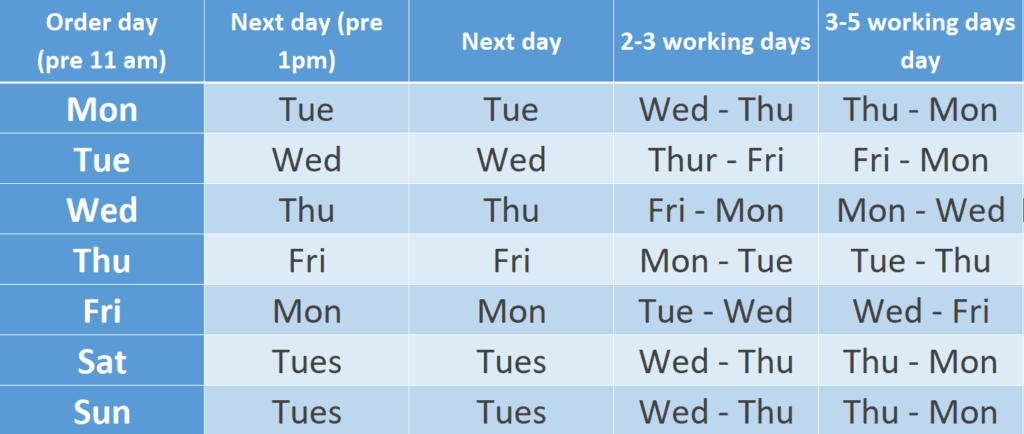Science of Soundproofing
As a specialist soundproofing company, we deal with a large variety of soundproofing problems every day and our experience shows that most people require simple answers to their questions, (read our short Guide to Sound here). However, some people would like to understand how soundproofing works in detail and this guide is designed to help you understand soundproofing and the science behind it.
We are all subject to some level of noise pollution (unless you live in a remote cottage with thick walls on top of a hill) such as traffic noise, humming electrical goods, noisy neighbours and loud music etc. We all expect some level of background noise and in fact we are extremely good at ignoring low levels of noise in our day to day lives, it is only when the noise level increases that it affects us in an adverse way.
How does soundproofing actually work?
Before I can explain some soundproofing solutions I just need to give you a brief description of how sound works. Sound is an energy that travels in two ways. The most common is airborne noise such as people talking and TV noise; the second is impact/vibration noise such as footsteps on floorboards and vibrating machines.
Soundproofing works in one of three ways. One is to block the noise by adding mass to a structure to a point that sound energy is reflected or converted into heat by the mass of the new structure. The second is to de-couple one structure from another, therefore, stopping the sound vibration from travelling through to the second structure. The third is sound absorption which is when sound is absorbed by a material such as Rockwool, therefore reducing the amount of sound that travels through a structure.
The final point is to think of soundproofing like waterproofing, it is only as good as the weakest point. A good example I like to use is to imagine that you are in a car and that the window is open only a small amount at the top, with this small gap open you can normally hear all the sound outside perfectly clearly, close the small gap and the car becomes soundproofed and all sounds are reduced to a quiet muffle. The point of this is to illustrate that no gaps must be left when soundproofing.

Understanding how sound is measured?
I need to quickly explain this because it relates to gauging how much noise you are trying to stop, once we know the level of noise you are trying to block then the correct level of soundproofing can be applied.
Airborne Sound
Airborne sound is energy and is measured in decibels (dB) and this is shown on a logarithmic scale. This scale measures the increase in energy created by noise and for every three dB increase in the scale it measures a doubling of the energy. Now we as humans are not good at detecting this level of increase easily so a better way to use this scale is to say that a ten dB increase equates to a doubling of the perceived noise. So the higher dB reduction for airborne noise the better.
Impact Noise
Impact noise is also measured in decibels (dB), but it measures the amount of impact energy a structure will transfer. So the lower the dB figure for impact noise the better.
Now as stated above we all live with a level of background noise in our life and a normal dB reading in what we consider to be a standard domestic quiet room would be around 30-40dB which we will use as a target figure for soundproofing.
To establish the correct dB figure for soundproofing we need to achieve, to give you peace and quiet, we would ideally need to take a reading on both sides of the structure initially, with noise being created on one side only, so we can ascertain the level of soundproofing that the existing structure already provides. When we look at the dB reading on your side of the structure (if you are suffering noise from a neighbour) we would then know the level of sound we are trying to block. However in most cases you may not have access to your neighbour’s property so a sound dB reading has to be taken just on your side of the structure when the noise is at its loudest and we will deduct this from the normal dB background noise to give us a target figure.
Now we know the level of dB we are trying to reduce then the correct soundproofing solution can be applied.
The Science Of Soundproofing
| Noise | dB | Understanding the dB |
|---|---|---|
| Boeing 737 or DC-9 aircraft at one nautical mile (6080 ft) before landing (97 dB); power mower (96 dB); motorcycle at 25 ft (90 dB). Newspaper press (97 dB). | 90 | 4 times as loud as 70 dB. Likely damage 8 hr exp |
| Garbage disposal, dishwasher, average factory, freight train (at 15 meters). Car wash at 20 ft (89 dB); propeller plane flyover at 1000 ft (88 dB); diesel truck 40 mph at 50 ft (84 dB); diesel train at 45 mph at 100 ft (83 dB). Food blender (88 dB); milling machine (85 dB); garbage disposal (80 dB). | 80 | 2 times as loud as 70 dB. Possible damage in 8 hr exposure. |
| Passenger car at 65 mph at 25 ft (77 dB); freeway at 50 ft from pavement edge 10 a.m. (76 dB). Living room music (76 dB); radio or TV-audio, vacuum cleaner (70 dB). | 70 | Arbitrary base of comparison. Upper 70s are annoyingly loud to some people. |
| Conversation in restaurant, office, background music, Air conditioning unit at 100 ft | 60 | Half as loud as 70 dB. Fairly quiet |
| Quiet suburb, conversation at home. Large electrical transformers at 100 ft | 50 | One-fourth as loud as 70 dB. |
| Library, bird calls (44 dB); lowest limit of urban ambient sound | 40 | One-eighth as loud as 70 dB. |
| Quiet rural area | 30 | One-sixteenth as loud as 70 dB. Very Quiet |
| Whisper, rustling leaves | 20 | |
| Breathing | 10 | Barely audible |
Most soundproofing materials will have a dB rating. This rating is normally a measurement of the total sound reduction achieved on a standard construction after the sound has passed through all the existing materials and the additional soundproofing material.
Why should I soundproof my home?
Not all people need soundproofing but a great deal of our UK housing stock have thin walls, floors and ceilings that do not provide adequate soundproofing for normal domestic noise levels. Part of this reason is that when these properties were built they were not designed to block modern levels of noise such as TV’s in several rooms, HiFi music, computer games, washing machines, home cinema sound systems, central heating pumps and mobile phones etc. So even if you think you are not being excessively noisy you have to remember that all the above sound may be traveling through to your neighbour’s property.
If however you are making excessive noise within your property due to say, home cinema systems, playing of musical instruments or recording music etc., then soundproofing is something you may consider to keep good relations with your neighbours.
The Government is also concerned with noise and since 2003 has passed legislation for all new buildings and refurbishments, (called Building Regulations Part E). The aim of these regulations is to improve sound insulation, not only between dwellings but actually within the properties themselves, and also between shared property such as flats, rooms in hotels and residential homes. As a rough guide the target is 45dB for airborne noise.
Where to now?
We have created a range of handy guides to help you with your soundproofing requirements, from soundproofing floors, walls and ceiling to reduce everything fro noisy neighbours, large scale project specifications to recording studios and auditoriums – to sound absorption for high reverberant spaces in schools, offices and other problematic areas.




